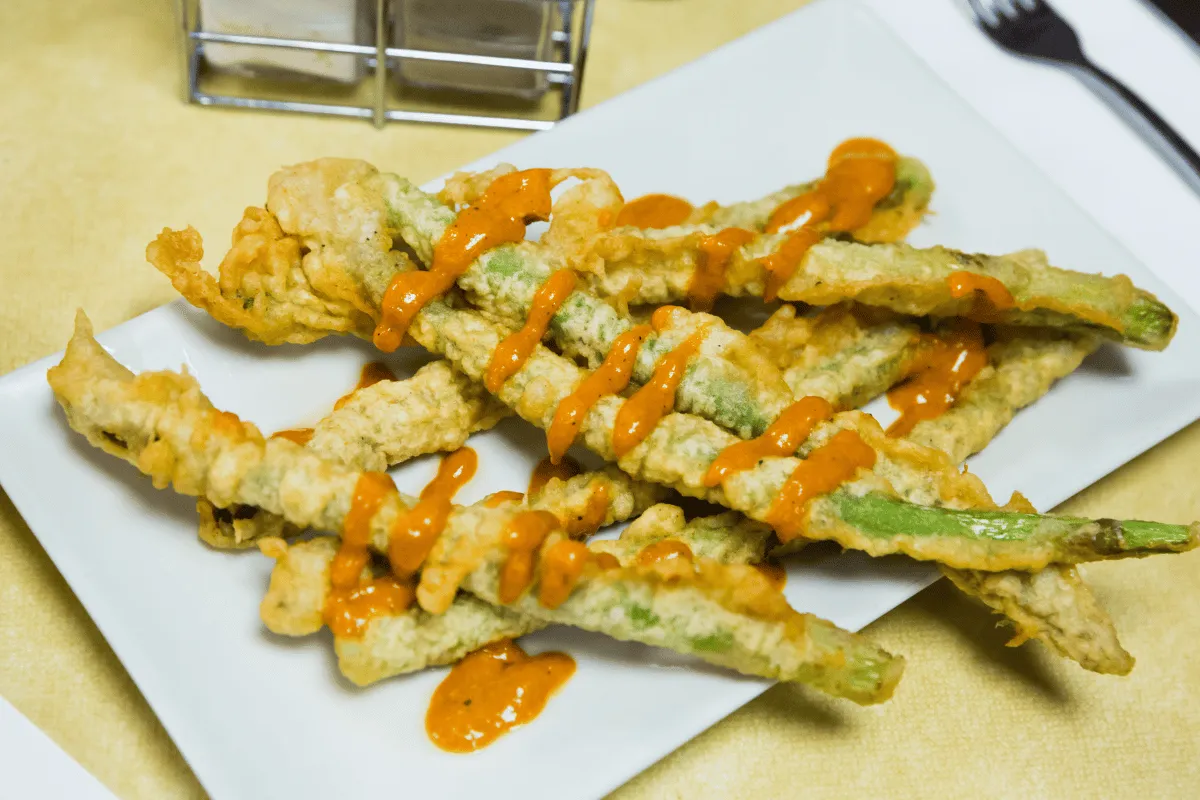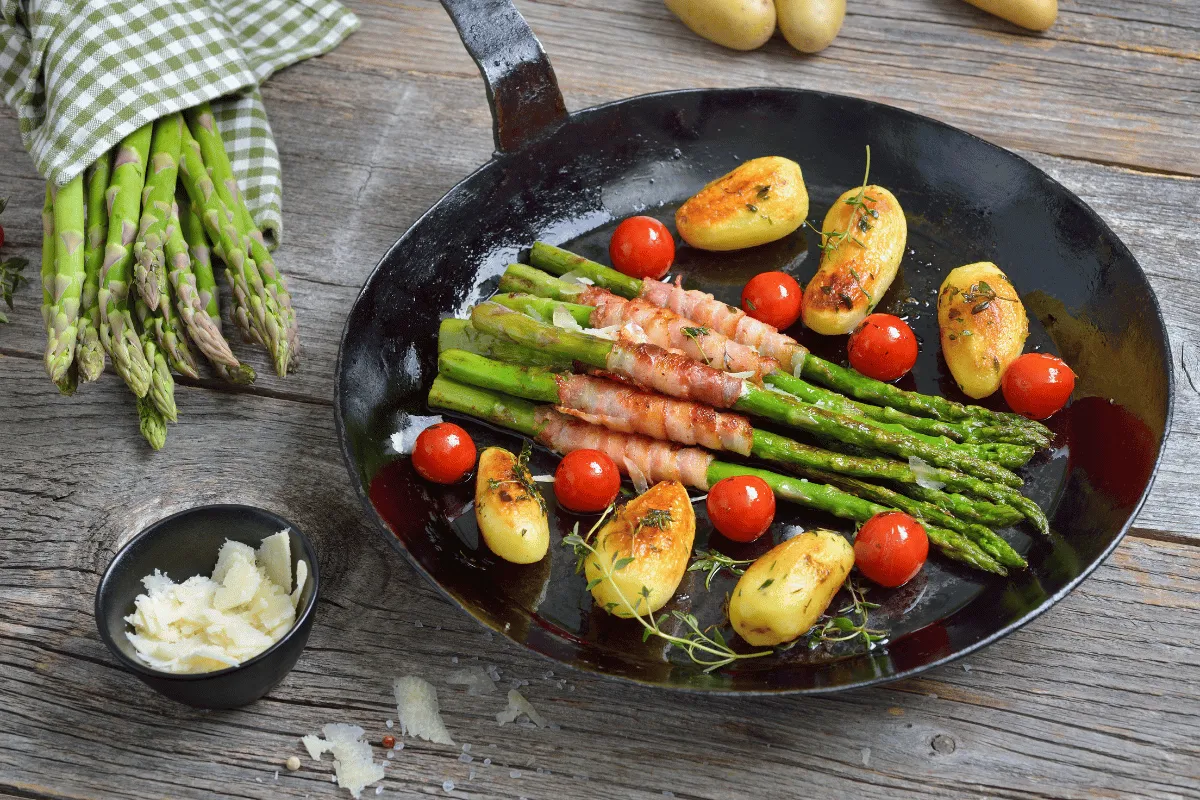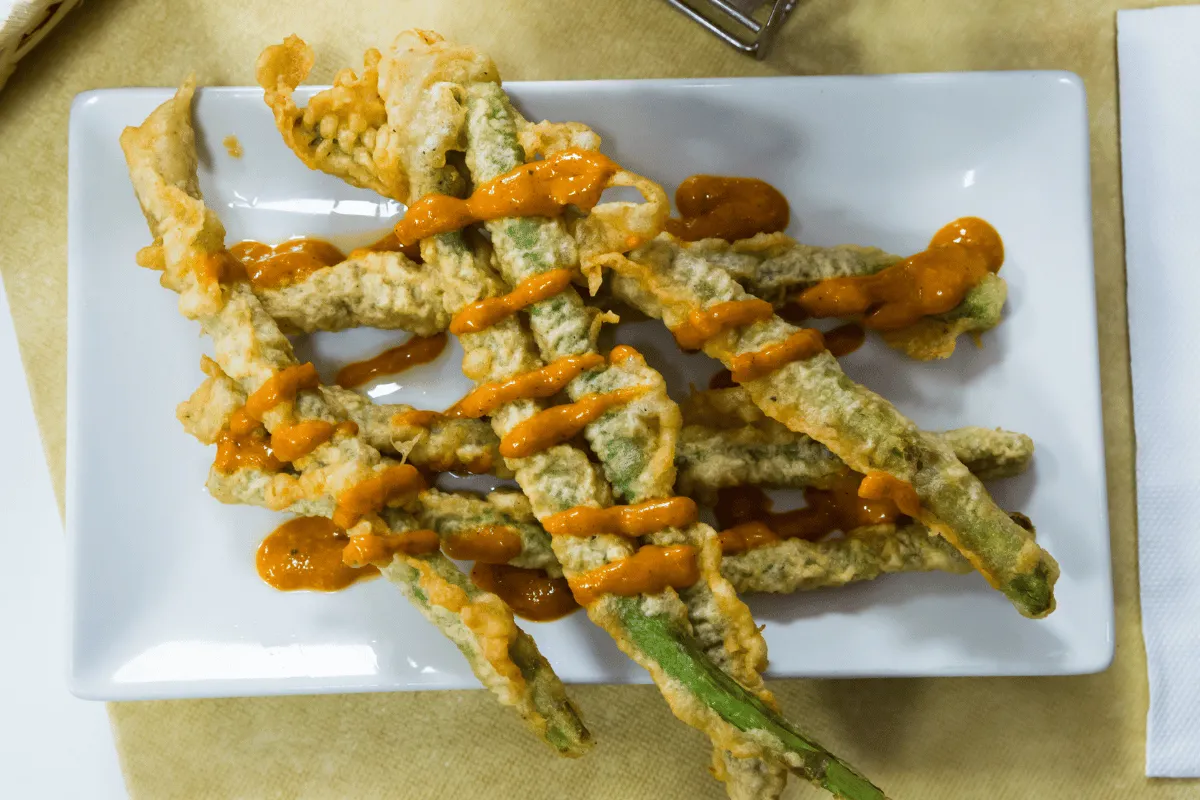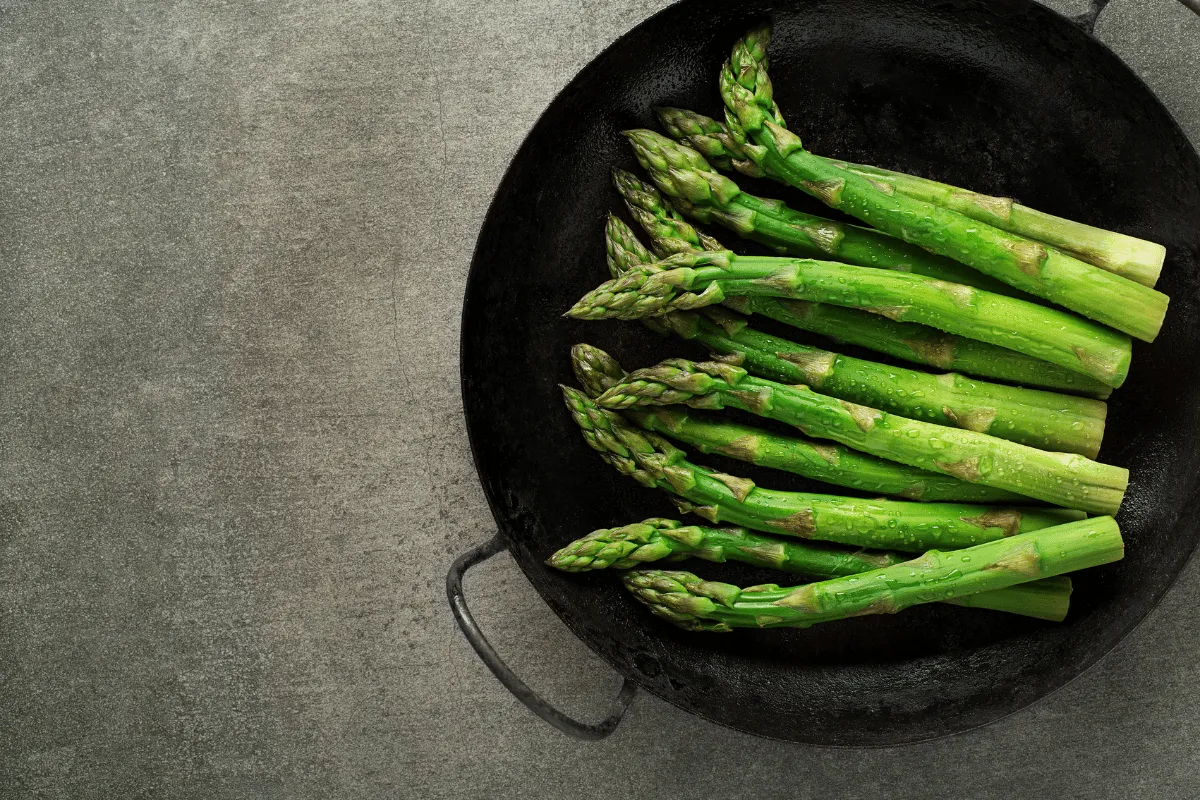In the culinary world, few dishes can boast the perfect blend of simplicity and elegance quite like fried asparagus. This delightful dish, with its tender heart wrapped in a crispy coat, has won over the hearts of food enthusiasts everywhere. Whether you’re a seasoned chef or a kitchen newbie, mastering the art of frying asparagus can add a touch of sophistication to your meals. In this comprehensive guide, we’ll dive deep into everything you need to know about creating the perfect fried asparagus recipe. From selecting the freshest spears to exploring various cooking techniques and serving suggestions, we’ve got you covered. So, let’s embark on this flavorful journey together and discover how to elevate this humble vegetable into a gourmet delight.
Introduction to Fried Asparagus
Ah, fried asparagus – isn’t it just the epitome of spring on a plate? This dish, with its vibrant green spears encased in a golden, crunchy exterior, is a true celebration of both flavor and texture. But before we dive into the nitty-gritty of frying up this green goodness, let’s take a moment to appreciate what makes asparagus so special.
Asparagus, a perennial flowering plant, is eagerly awaited each spring, marking the season with its arrival. It’s not just its unique, earthy taste that makes asparagus a favorite among chefs and home cooks alike; it’s also its versatility in the kitchen. You can grill it, steam it, roast it, and yes, fry it to perfection.
Frying asparagus transforms it into a dish that’s both sophisticated and comforting. Imagine taking a bite and hearing that satisfying crunch, only to be followed by the tender, slightly sweet taste of the asparagus itself. It’s a culinary experience that’s hard to beat. Plus, it’s a fantastic way to get those who are a bit wary of greens to indulge in their veggies.
Whether you’re looking to impress guests at a dinner party or simply spice up your weeknight dinner routine, fried asparagus is a surefire way to do it. And the best part? It’s surprisingly simple to make. With a few tips and tricks up your sleeve, you’ll be whipping up this dish like a pro in no time. So, let’s get started on our journey to mastering the art of frying asparagus, shall we?
Preparing Asparagus for Frying
Before we jump into the frying pan, so to speak, let’s talk prep. Getting your asparagus ready for its crispy transformation is key to achieving that perfect texture and flavor. Here’s how to set the stage for frying success.
Selecting the Best Asparagus
First things first, picking the right spears is crucial. When you’re at the market or grocery store, reach for asparagus that stands tall and proud. You want spears that are bright green and firm, with tightly closed tips. Oh, and size? It’s mostly a matter of preference, but medium spears tend to be the Goldilocks choice for frying—not too thick, not too thin.
Preparation Steps
Got your asparagus? Great, let’s get it ready for the spotlight.
- Washing and Trimming: Asparagus can be a bit gritty, so give it a good rinse under cold water. Then, it’s time to trim. The bottom ends of asparagus spears can be woody and tough—a no-go for our crispy endeavor. The easiest way to find where the tender part starts is to gently bend the spear until it snaps. It’ll naturally break where the woody part ends and the tender part begins. But, if you’re feeding a crowd and want to speed things up, just line them up and cut about an inch from the bottom.
- Drying: This step is often overlooked, but it’s a game-changer. After washing, pat your asparagus dry with a clean kitchen towel or paper towels. Why? Moisture is the enemy of crispiness. We want to avoid steam in the frying process, ensuring our asparagus gets that golden coat we’re after.
- The Importance of Drying: I can’t stress this enough—make sure those spears are as dry as a bone before they hit the pan. Any lingering moisture will lower the oil’s temperature, leading to soggy, oil-laden asparagus. And that’s not what we’re here for, right?
Now that our asparagus is prepped and ready to go, we’re one step closer to achieving that crispy, crunchy perfection. Stay tuned, because next, we’re diving into the heart of our culinary adventure: the frying itself. Trust me, it’s easier than you think, and the results? Absolutely delicious.
Fried Asparagus Recipes
Now that our asparagus is prepped and primed, it’s time to turn up the heat. Frying asparagus can be done in a few different ways, each bringing its own unique flavor and texture to the table. Let’s explore some mouth-watering recipes that will make this veggie the star of your next meal.
Basic Fried Asparagus Recipe
Let’s start with the basics—a simple yet irresistible fried asparagus recipe that’s perfect for beginners and seasoned cooks alike.
Ingredients:
- 1 pound of asparagus, prepped as described
- ½ cup of all-purpose flour (for a gluten-free option, use almond meal)
- 2 large eggs, beaten
- ¾ cup of panko breadcrumbs (gluten-free breadcrumbs work too)
- 1 teaspoon of garlic powder
- Salt and freshly ground black pepper to taste
- Olive oil for frying
Instructions:
- Preheat your skillet over medium-high heat and add enough olive oil to lightly coat the bottom.
- Dredge the asparagus by first rolling it in flour seasoned with salt and pepper, then dipping it into the beaten eggs, and finally coating it with a mix of panko breadcrumbs and garlic powder.
- Fry the asparagus in batches, making sure not to overcrowd the pan. Each spear should have its moment in the spotlight, frying until golden brown and crispy, about 2-3 minutes per side.
- Drain and serve. Transfer the fried spears to a paper towel-lined plate to drain any excess oil. Sprinkle with a bit more salt and serve immediately, perhaps with a squeeze of lemon or your favorite dipping sauce.

Variations of Fried Asparagus
Now, let’s get creative. Here are a few variations to spice up your fried asparagus game:
- Parmesan Asparagus: Add grated Parmesan to the breadcrumb mixture for a cheesy twist.
- Spicy Asparagus: Mix in some Cajun seasoning and red pepper flakes with your breadcrumbs for a kick.
- Stir-Fried Asparagus: For a lighter option, quickly stir-fry your asparagus in a hot wok with a splash of soy sauce, garlic, and a drizzle of sesame oil.
Each of these variations brings a new dimension to the humble asparagus, proving that this green spear is anything but boring. Whether you’re in the mood for something cheesy, spicy, or light and zesty, there’s a fried asparagus recipe here for you.
So, why not give it a try? With these simple recipes and tips, you’re well on your way to mastering the art of frying asparagus. Not only will you impress your guests, but you’ll also have a delicious, go-to side dish that’s perfect for any occasion. Stay tuned for more tips on how to make your fried asparagus even more irresistible.
Cooking Techniques and Tips
Cooking Methods
- Pan-Frying: This method is ideal for those who prefer a hands-on approach. It allows you to control the cooking process closely, adjusting the heat as needed to ensure even browning. Remember, a medium-high heat and a bit of patience will reward you with beautifully crispy spears.
- Deep-Frying: For an extra crunch, deep-frying asparagus in a pot of oil can’t be beaten. The key here is to maintain the oil temperature at around 375°F to ensure the asparagus cooks through without absorbing too much oil. A kitchen thermometer can be your best friend in this process.
- Oven-Frying: A healthier alternative that doesn’t skimp on texture. Preheat your oven to a high temperature (around 425°F), arrange your breaded asparagus on a wire rack over a baking sheet, and bake until golden. This method circulates air around the spears, mimicking the crunch of frying without the extra oil.
- Air-Frying: If you have an air fryer, you’re in luck. This gadget can give you the crunch of deep-frying with just a fraction of the oil. Just set your air fryer to 400°F, arrange the asparagus in a single layer, and cook for about 7-10 minutes, shaking the basket halfway through.
5 Tips for Making Crispy Fried Asparagus
- Don’t Overcrowd the Pan: Whether you’re pan-frying or deep-frying, giving each spear its own space is crucial. Overcrowding can lower the temperature of the oil, leading to soggy asparagus.
- Use the Right Oil: Choose an oil with a high smoke point, like canola or vegetable oil, to withstand the high temperatures needed for frying without burning.
- Batter Matters: A light coating of flour, egg, and breadcrumbs provides the perfect texture. For an extra crispy shell, let the breaded asparagus sit for a few minutes before frying to help the coating adhere.
- Season Well: Don’t forget to season your flour and breadcrumbs. Salt, pepper, and spices like garlic powder can elevate the flavor of your fried asparagus.
- Serve Immediately: Fried asparagus is best enjoyed fresh out of the pan. If you need to keep it warm, place it on a wire rack in a low oven to maintain its crispiness until serving.
By mastering these techniques and keeping these tips in mind, you’ll be well on your way to creating fried asparagus that’s perfectly crispy on the outside and tender on the inside. Whether you’re serving it as a side dish or a snack, it’s sure to be a hit. So, go ahead, heat up that oil, and get ready to enjoy the delicious results of your newfound frying expertise.
Canned Asparagus Recipes: Versatile & Nutritious Meal Ideas
Serving and Pairing Suggestions
Once you’ve mastered the art of frying asparagus to perfection, the next step is to serve it in a way that complements its flavors and textures. Here are some serving and pairing suggestions to elevate your fried asparagus from a simple side dish to a memorable part of your meal.
Serving Suggestions
Presentation is key. Arrange your fried asparagus on a platter with a sprinkle of coarse sea salt and a few lemon wedges on the side. The brightness of the lemon juice adds a lovely contrast to the rich, crispy asparagus. For an extra touch of elegance, drizzle a bit of balsamic reduction over the top just before serving. This not only adds a depth of flavor but also makes for a visually stunning dish.
Dipping sauces can transform fried asparagus into a fun and interactive appetizer. Offer a variety of sauces such as homemade aioli, tangy ranch dressing, or a spicy mayonnaise to cater to different tastes. Serving fried asparagus with dipping sauces encourages guests to dive in and enjoy the dish in a casual, communal setting.
Pairing with Meals
Fried asparagus is incredibly versatile and pairs beautifully with a wide range of main dishes. Here are a few ideas to get you started:
- With Grilled Meats: The smoky flavor of grilled beef or chicken is a perfect match for the crispy, tender asparagus. The contrast in textures and flavors makes for a balanced and satisfying meal.
- In Pasta Dishes: Chop your fried asparagus into bite-sized pieces and toss them into your favorite pasta dish for an added crunch. They work particularly well in lighter pasta dishes dressed with olive oil and fresh herbs.
- As Part of a Spring Salad: Combine your fried asparagus with mixed greens, fresh strawberries, goat cheese, and a light vinaigrette for a spring salad that’s bursting with flavor and texture.
- With Seafood: The delicate flavors of seafood, especially when lightly seasoned and pan-seared, complement the boldness of fried asparagus. Try serving it alongside salmon, shrimp, or scallops for a meal that feels both sophisticated and comforting.
No matter how you choose to serve it, fried asparagus is sure to add a touch of elegance and a burst of flavor to your table. Its versatility makes it easy to incorporate into a variety of meals, ensuring that it will become a go-to recipe in your culinary repertoire. So, go ahead, experiment with these serving and pairing suggestions, and watch as fried asparagus becomes a dish that you and your guests will look forward to time and time again.



